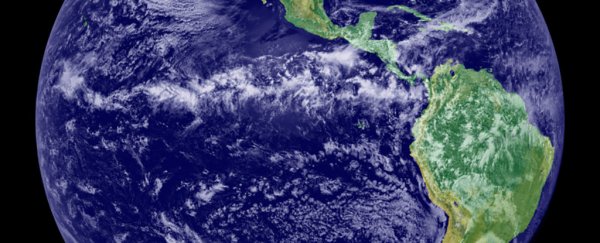A new study suggests a potential change in tropical rain belt patterns could threaten the livelihoods and food security of billions of people.
Today, the tropical rain belt brings with it heavy precipitation along the equator, but as different parts of Earth's atmosphere heat up at different rates, this belt looks likely to become disrupted as it gets attracted to warmer regions of air – threatening biodiversity and taking away the water that people rely on, including growing crops.
Researchers analysed 27 of the most up-to-date climate models to reach their conclusions, but the full impact of the climate crisis on the tropical rain belt only became clear when they isolated the effects on the Eastern and Western Hemispheres, and studied them separately.
"Our work shows that climate change will cause the position of Earth's tropical rain belt to move in opposite directions in two longitudinal sectors that cover almost two thirds of the globe, a process that will have cascading effects on water availability and food production around the world," says atmospheric scientist Antonios Mamalakis, from Colorado State University.
Across the eastern Pacific Ocean and the Atlantic Ocean in the Western Hemisphere, a southward shifting of the tropical rain belt will increase drought stress in regions across Central America, according to the projections.
In parts of the Eastern Hemisphere meanwhile, including eastern Africa and the Indian Ocean, the belt is predicted to move north: that will make droughts more common and longer-lasting in regions such as southeastern Africa and Madagascar, while also increasing the risk and severity of flooding in southern India.
All of these projections rely on a careful assessment of the various feedback loops that are likely to come into play over the coming decades – how shifts in temperature will affect conditions, then how those changing conditions will drive further changes in temperature, and so on.
"In Asia, projected reductions in aerosol emissions, glacier melting in the Himalayas and loss of snow cover in northern areas brought on by climate change will cause the atmosphere to heat up faster than in other regions," says Earth systems scientist James Randerson from the University of California, Irvine (UCI).
"We know that the rain belt shifts toward this heating, and that its northward movement in the Eastern Hemisphere is consistent with these expected impacts of climate change."
Significant changes towards what these models show could be brought about as early as the turn of the century, the researchers say, emphasising the urgency with which greenhouse gas emissions need to be brought under control.
This is just one of several worrying impacts of climate change that will not only make it harder to live a normal life on parts of our planet, but also push conditions into an even worse state at the same time. Once the dominos start falling, it's going to be increasingly difficult to set them right, so every action we can do right now is of essence.
Scientists hope that having a greater understanding of what's coming – as this study provides – will push individuals and governments alike to make the sort of substantial changes that can give all of us a brighter future.
"The complexity of the Earth system is daunting, with dependencies and feedback loops across many processes and scales," says civil and environmental engineer Efi Foufoula-Georgiou, from UCI.
"This study combines the engineering approach of system's thinking with data analytics and climate science to reveal subtle and previously unrecognised manifestations of global warming on regional precipitation dynamics and extremes."
The research has been published in Nature Climate Change.
